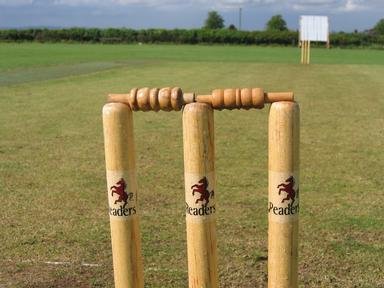Quiz Answer Key and Fun Facts
1. The earliest written reference about cricket is attributed to one John Derrick. Whilst testifying in a court case, the record has him saying that he "played creckett" at the Royal Grammar School in Guildford. In what century was this?
2. The earliest reference to adults playing organized cricket dates back to 1611. What happened to two of the men from Sussex who played cricket on a Sunday in the summer of that year?
3. Prior to 1774, when the Laws of Cricket were formalized, what was essentially different about the wickets at which the bowlers bowled?
4. Where, and in what year of the 18th century, is the earliest evidence of cricket being played in the USA?
5. From what object do historians believe that the game of cricket inherited its name?
6. Who is attributed with first employing roundarm bowling?
7. The first international cricket match between two nations was played in 1844. Who were the two competing countries?
8. Which of these touring teams didn't come to England to play cricket in the 1880s?
9. What reason or excuse has been given in many quarters for England losing the first ever Test match with Australia in 1877?
10. Lord Harris (1851-1932) is generally credited with helping to establish cricket in which country?
Source: Author
huw27
This quiz was reviewed by FunTrivia editor
gtho4 before going online.
Any errors found in FunTrivia content are routinely corrected through our feedback system.
